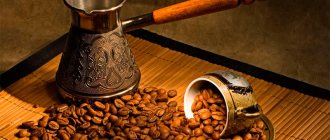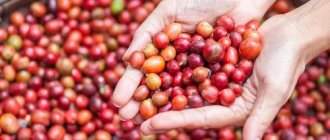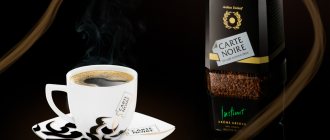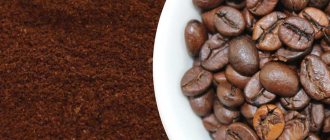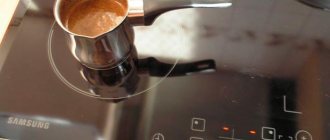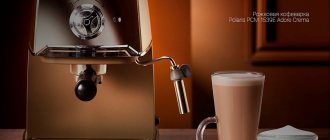Useful tips
The culture of drinking coffee is already akin to a real religion or, at least, a ritual act
, with which an unimaginably huge number of people on our planet begin their every morning.
There are many ways to prepare coffee, as well as many types of this drink in finished form. However, some people's tastes
Those who prefer, for example, only coffee from a coffee machine, may not change for years or even decades.
But there is also a huge army of so-called omnivorous coffee lovers who consume several servings of a wide variety of coffee
- from a machine, from a geyser coffee maker, regular brewed in a cup, or even an instant version of this drink.
However, even the most unassuming consumers, having tried coffee prepared in a Turk at least once (moreover, prepared with love for details and for the process itself)
), admit that they have never tasted tastier coffee.
Which Turk is better?
How to choose a Turk for coffee
A turk (or, to put it correctly, a cezve) is a vessel of a specific shape in which this aromatic drink
. The drink prepared in Turk is often called Turkish coffee, and in many countries, including Russia and Europe.
Most of all, a Turk looks like a small ladle or jug with a long handle. In general, the name “Turk” is a kind of gag from the Russian people
. Initially, the dishes were called cezve, but the word “Turk” became more familiar to most domestic consumers.
This interesting vessel has several varieties that differ from each other in details, but use the same principle of making coffee
. Thus, one of the varieties of Turka is the Arab dhal, which is even more similar to a jug; in Armenia they use sdrzhep, which is more similar to the Turk we are used to.
What material are Turks made of?
The variety of materials for Turks is, in fact, considerable: you can find copper Turks on sale (this is the traditional material for such utensils
), aluminum, ceramics, brass, cupronickel, steel and various alloys, clay Turks, glass Turks and even silver cezves.
It would be a good idea to try Turkish coffee of different materials - this may help someone make their choice of cezve. But if you don't feel the difference
, this does not mean that you should not bother with the choice of material! This may also mean that the person who made you wonderful coffee in the worst Turkish coffee pot simply knows how to use it.
If you decide to treat yourself every day with coffee prepared personally in a Turkish coffee pot, then you should pay attention not only to what material it is made of
it is made, but also to its shape. In fact, as you will see later, these parameters (shape and size of the Turkish coffee) are extremely important for preparing real Turkish coffee.
By the way!
Coffee brewed in Turkish is not always the so-called Turkish or Oriental coffee! Coffee under this name is just one of the options for making coffee.
in Turk, of which there are many. However, we’ll talk about recipes another time, but for now let’s return to the materials from which the Turka is made.
Pros and cons of various materials of manufacture
It’s not for nothing that the coffee pot has such a unique shape. The wide bottom and narrow neck prevent the liquid from evaporating quickly and the drink from thickening. Also, in a jug-shaped vessel, coffee grounds settle faster. A good Turk can last for decades if you choose the best material. Although each material has its pros and cons, which we will consider.
So, we will find out below which material is better for a Turk.
Aluminum
This metal is very light, and products made from it are inexpensive.
Aluminum cookware is made on an industrial scale and is not uncommon. Cezves made of aluminum metal were very popular in Soviet times. Surely many people still have such Turks to this day. But the material has not only advantages, but also some disadvantages. Pros:
- Cheapness.
- Ease.
- Durability.
- Simplicity.
Minuses:
- Metal bends under the influence of impacts, and scratches from sharp objects are also not easy for us.
- Most models are produced by stamping, so they do not comply with the required proportions of the neck and bottom.
- The bottom is thin, due to which the drink may heat up too quickly.
- Due to the lightness of the metal, the vessel is unstable and can easily be toppled over.
Copper
In its pure form, copper quickly oxidizes and reacts with coffee. This does not have the best effect on the drink. Basically, for such cezves, a brass alloy is used, where copper is only an impurity. The brass Turk is considered one of the best. This material has high thermal conductivity, and it is in such vessels that the oils contained in coffee beans are best extracted. A quality product must be coated with tin. The protective layer prevents the copper alloy from oxidizing and releasing toxic substances.
Pros:
- Brass is resistant to mechanical damage.
- The metal evenly heats the drink, making it richer.
- Durability.
- Affordable price.
Minuses:
- Requires periodic cleaning as it gets dark.
- Without a protective tin coating (inside), it can release harmful substances during oxidation.
Ceramics
Ceramic Turks are highly decorative. Often among them there are unique handmade products. To make clay cezves, special plasticizers are used to make them more durable. Ceramic vessels can have a glossy finish (glazed) or matte. These coffee makers are among the best in terms of their properties. They retain heat perfectly, enhance the aroma of the drink and are also completely environmentally friendly. If you want an original Turk, then choose a ceramic one. Prices for this type of coffee maker are higher, especially if it is a manual product.
Pros:
- Unique designs.
- Environmentally friendly.
- Ideal thickness of bottom and walls.
Minuses:
- Fragility.
- Requires special care (cannot be washed in a dishwasher, do not allow sudden temperature changes, or use abrasive cleaning agents).
- Due to its porosity, it absorbs coffee particles and can distort the aromas of different varieties, so it is recommended for brewing only one type of coffee.
Glass
Turks began making glass relatively recently. They use special heat-resistant glass, but it still remains quite fragile. In appearance, transparent cezves look original, but this is not the best option for a coffee maker. You should only choose a glass pot that has thick material.
Pros:
- Modern stylish design.
- Affordable price.
- You can observe the process happening inside.
- There are no pores in the glass, so you can heat other liquids in the Turk without fear that the smell will remain.
- Can be washed in the dishwasher.
Minuses:
- Low impact resistance.
- The thin material conducts heat too quickly, preventing the coffee from extracting properly.
- Irregular shape with a too wide neck.
Silver
Silver cezves are considered noble vessels. This is not only a useful vessel, but also a wonderful interior decoration. Silver Turks are often very beautiful. They are not produced on an industrial scale, but are made in single copies by craftsmen, so they are expensive. Occasionally they are produced by jewelry factories in small batches. A product made of noble metal can last for decades.
Pros:
- Unique, sleek design.
- Durability.
- Correct form.
Minuses:
- High price.
- Special care and periodic cleaning are required as silver darkens.
- Thermal conductivity is too high.
Stainless steel
Stainless steel is a very practical and wear-resistant material. Turks from this material are manufactured on an industrial scale and are inexpensive. In a stainless steel vessel you can brew coffee of fairly good quality. But only if the container has the correct proportions. And in many stainless steel Turks sold today they are broken.
Pros:
- Affordable price.
- High strength.
- Easy to care for.
- Durability.
Minuses:
- The correct form is not maintained.
- If the bottom is thin, the drink heats up too quickly due to the high heat-conducting properties of the metal.
Other materials
Turks made from other materials are also less common. An enameled coffee maker can be made of stainless steel, but more often it is made of aluminum. Enamel improves the quality of the metal and if the container has the correct shape, then it is quite worthy of attention.
An uncoated clay cezve is not the best option. The material, although environmentally friendly, is too fragile and porous. Such products are more suitable as decorative ones.
Crystal Turk is very rare. Its properties are better than glass. But, like clay, it has a decorative value, not a practical one.
Porcelain cezve is close in its characteristics to ceramic. You can brew very rich and aromatic drinks in it, the main thing is to properly care for the fragile material.
The quality of a bronze Turk is better than that of a copper one. It has the most optimal heat-conducting properties. Bronze is stronger than copper and does not corrode as much. You can buy bronze Turks only in handicraft workshops and shops with handicrafts; they are not produced en masse.
Which Turk is better?
Aluminum Turk
Aluminum is a material with lower thermal conductivity than copper. However, aluminum is much cheaper. That is why it is considered more practical
: even if such a Turk bends, you don’t feel sorry for her; and it doesn’t cost anything to correct the product (that’s why the aluminum Turk is such a camping option).
What to do with the statement that aluminum cookware is harmful to health?
Indeed: the acidic environment of some products reacts with aluminum, “absorbing” a certain amount of it
. However, coffee brewed in an aluminum pot, to put it mildly, has nothing to do with an acidic environment.
And in general, let's dispel the myth about the dangers of aluminum cookware: it has been proven that even the most aggressive acidic environment (for example, a tomato in combination with lemon and vinegar
) removes such an amount of aluminum from dishes that is only 10 percent higher than the average daily dose of consumption of this metal.
Keep in mind!
The shape of aluminum turks, most often made by stamping, often differs from the classic-shaped
. Because of this, the aroma of coffee brewed in such a Turk is partially lost.
Aesthetically, the aluminum Turk also does not attract much attention. And yet, a cezve made from such material has a right to life, since the coffee prepared in it has quite decent taste
for the average person. In addition, such a Turk is so inexpensive that it can be changed at least once a week.
How to choose an aluminum Turk
Please examine the cookware carefully before purchasing. It must meet several criteria.
- There are no burrs or irregularities on the neck.
- The handle is secured with bolts.
Due to the oxide layer on the metal surface, it has poor adhesion, so the most reliable way to attach the handle is with bolts.
- The handle is equipped with insulating pads. Otherwise, it will be difficult to hold the Turk, aluminum heats up quickly.
- The neck has a maximum narrowing.
- The outer surface is ground or polished.
- Smooth bottom with no signs of deformation. Then the Turk will have maximum stability.
The best Turk for coffee
Brass Turk
A brass Turk in its parameters is not much different from a copper Turk. The strength of brass is quite sufficient
in order to use a cezve made from this material for many years without fear that it will become deformed.
Since brass basically contains the same copper, being a multicomponent alloy, making coffee in such a pot is almost the same as in a copper pot. At the same time, the cost of brass Turks
(unless, of course, it is decorated with some ornate embossing) slightly higher than copper cezves.
What are the main advantages of a brass Turk?
Brass, as a material for Turks, in addition to strength, is distinguished by good ductility. This allows you to make classic-shaped cezves, which makes it possible to brew coffee while preserving all its aromas
. This Turk does not require additional care, and it looks more aesthetically pleasing than copper. A hammer made of brass with chasing is an excellent and practical gift.
One of the disadvantages of a brass Turk is that if the internal coating is of poor quality, an oxidation process
, which makes it unsuitable for further use. Such a Turk is more expensive than a cezve made of aluminum and a Turk made of steel (they will be discussed below).
Brass Turks should be purchased from manufacturers who guarantee the possibility of its practical use without danger to health. One of the main safety criteria is the presence of an internal coating (usually food grade tin)
. Also, the brass cezve can oxidize on the outside if it is rarely used, but this does not affect the safety of use of the product.
The best alloy cezves
Mallony MAL CW-650c
The rating opens with a container with non-stick internal coating. In general, the Turk consists of oxidation-resistant stainless steel, easily holding 2-3 cups. And the bakelite holder stays cool even during cooking. This model is easy to care for; you just need to rinse it in warm water every time after use, without using abrasives.
Turk Mallony MAL CW-650c
Advantages:
- Budget;
- cooking speed;
- pleasant to the hands;
- easy to care for;
- The inner coating is resistant to burning.
Flaws:
- There is a bad smell.
| Component base | Copper and steel |
| Volume | 0.65 l |
| Weight | 3.4 kg |
| Height | 10x10x12 cm |
| Hob | For induction and more |
| average price | 340 |
PADIA
The cezve has a fairly wide neck, but at the same time it has a very elegant spout and a practical plastic handle. It has a strong attachment, promising that it will not fall off during use. This model will be a great decoration for your kitchen.
Turkish PADIA
Advantages:
- Beautiful execution;
- easy to care for;
- roomy;
- inexpensive.
Flaws:
- Unstable holder.
| Component base | Steel alloy |
| Volume | 670 ml |
| Weight | 280 grams |
| Height | 10 cm |
| Hob | For induction cookers |
| average price | 399 |
Vitesse
The products of this brand combine quality and reasonable prices. As a rule, their Turks are made of high-grade steel with mirror polishing. The cezve has a plastic handle with a small spout that is pleasant to the hand. It quickly absorbs heat, directing and retaining it evenly. The peculiarities of the material, coupled with design trends, make it possible to reveal new facets of the famous drink.
Turk Vitesse
Advantages:
- Turka is dishwasher safe;
- she is undemanding in everyday life;
- big;
- long service life;
- The handle doesn't get hot.
Flaws:
- Too small nose.
| Component base | Steel |
| Volume | 0.54 l |
| Weight | 0.25 kg |
| Height | 21 x 9 x 9.5 cm |
| Hob | Any |
| average price | 699 |
Taller
The utensils for making coffee have a stainless steel base. The vessel is equipped with a bakelite holder with thermal insulation properties. The Turkish shape fits perfectly into any interior.
Turk Taller
Advantages:
- Dishwasher safe;
- mirror polishing;
- roomy;
- washes well.
Flaws:
- Do not put in the oven;
- narrow bottom.
| Component base | Steel |
| Volume | 0.5 l |
| Weight | 0.43 kg |
| Height | 8 x 9 cm |
| Hob | Induction hob requires a conductor |
| average price | 990 |
Ceramic coffee pot
Ceramic Turk
Opinions about ceramic Turks are diametrically opposed. Some people think that a ceramic Turk is beautiful and reliable. Others believe that coffee, once brewed in a ceramic pot, retains its taste forever.
; supposedly this changes, as a result, the taste of any other coffee that ends up in such a Turk.
Is it true that a ceramic pot is not suitable for preparing different types of coffee?
Let's be objective realists and remember what ceramics are. And ceramics in dishes are mostly, so to speak, glazed clay
. In fact, it is precisely because of its porosity that clay is coated with glaze.
Yes, the layer of this glaze is not very thick - due to the same porosity. But if you take good care of the ceramic Turk, washing it thoroughly
, no aroma remains from the coffee pre-brewed in it.
Another thing is the Turk, made from clay and not covered with glaze. Such products can also be purchased anywhere. Well, there is a rational grain here - clay in its pure form retains the aroma
coffee constantly prepared in it. So such a Turk is more of a beautiful souvenir.
Clay Turk - a practical souvenir
And yet, you can brew coffee in a clay pot. Many lovers of this drink even recommend using a clay pot if you are going to constantly prepare the same type of coffee
. You can also get rid of old coffee aroma by keeping the dishes in a deep container with warm water for some time.
Another noticeable disadvantage of clay and ceramic Turks is the extreme fragility of the material. Such a Turk is easy to break by dropping it; and clay can even break even from a careless blow
on the edge of the table. However, simple clay Turks are quite inexpensive products; but ceramics are more expensive.
However, this difference in price is not critical at all! Because if such a Turk is handled carefully, it will serve faithfully
long years. By the way, modern ceramic Turks are protected from temperature changes much better than their clay counterparts.
Design
When choosing a Turk for coffee, you need to rely on your own taste preferences. It would be useful to take into account several important points:
- Dishes of dark colors retain their beauty longer. It is noted that on copper models with a platinum “effect” the darkening is less noticeable;
- An excessive number of decorative elements gives the cezve an attractive appearance, but makes it difficult to maintain. It is easier to wash products that have a minimum of depressions and depressions;
- There are models with a strainer. This simple element allows you to get rid of the grounds that often end up in the finished coffee.
Choosing a Turk for coffee
Steel Turk
Steel utensils are very popular in the everyday life of modern people. Such utensils are not only reliable and durable, but also have sufficient versatility.
in cooking. But since we are talking about a Turk, versatility is far from what we are looking for.
A steel Turk is not the best option for making Turkish coffee.
We need uniform heating of the entire volume of the Turk when preparing oriental coffee. However, low thermal conductivity
A steel cezve, which differs significantly from the thermal conductivity of copper, does not allow for uniform brewing of coffee.
Hence the main disadvantage of a steel pot - it is not as expressive and rich in taste as coffee prepared in a copper pot. In addition, it is more difficult to control the boiling of coffee in a steel Turk
; By the way, such products are usually produced with a wide neck, which does not retain the aroma of the drink (we will talk about the shape of a regular Turka below).
Turk for Turkish coffee
Glass Turk
A glass Turk is not something exclusively modern and high-tech. Glass cezves appeared around the time when people in the East learned to blow high-temperature-resistant containers in the shape of a ball.
Another thing is the modern glass Turk. Such products are usually made from so-called cast glass, which is distinguished not only by significant thermal resistance, but also by increased mechanical strength. Glass teapots and even laboratory glassware are also made from this material.
What are the main advantages of a glass Turk?
A glass pot is a convenient tool for novice coffee lovers who have not yet gotten used to tracking the process of raising the foam.
in an opaque Turk. These Turks are affordable and very easy to clean. They also heat up quite well (due to the thin walls), although the thermal conductivity of glass is very low.
However, a glass cezve can hardly be called a utensil for real lovers of coffee in a cezve. Due to the thinness of the walls of the product, the drink boils too quickly
, so all the coffee oils simply do not have time to be extracted as a result of this process. And is it worth talking separately about the fragility of this utensil?
Crystal Turk - an alternative to glass cezve
Indeed, a crystal Turk is an alternative to a glass Turk. However, this alternative is not that the crystal cezve
provides some special properties of the drink - the coffee in it is exactly the same as in a Turk made from heat-resistant glass.
Despite its exquisite appearance, the crystal Turk is a completely practical product that can be safely used over an open fire. This kind of cezve is stronger than glass
, although falling it on a tiled floor can lead to fatal consequences. In general, this is quite a practical and very beautiful utensil.
Which coffee pot to buy?
Silver Turk
It is believed that in the East the nobility used exclusively copper and silver Turks for making coffee
, while people of low class and wealth could only afford to use clay cezves.
This may make sense, especially considering the fact that people in ancient times paid attention to what we call the antibacterial properties of silver
. However, when preparing coffee in a Turk, such abilities are of little use, so you should not rely on these properties.
How to choose a silver Turk?
Let's make a reservation right away - if you want to buy a silver Turk in which you could brew coffee, then a product made of high-grade silver will not suit you! Souvenir cezves are usually made from such silver
.
Evidence confirming the possibility of using a silver pot for making coffee can be a hygienic certificate for the product.
Keep in mind that the thermal conductivity of silver is slightly higher than that of copper. If you have good Turkish coffee making skills, this fact can have a positive effect
. Otherwise, you risk not having time to “save” the coffee from boiling too early. In addition, a silver Turk is not a cheap pleasure, and it requires special care.
In general, the practical purpose of searching for just such a Turk intended for brewing coffee makes little sense. Such a cezve is not capable of enriching the taste
favorite drink; in fact, its properties are no different from copper Turks. However, you can use the product to store water in it, enriching it with silver ions...
Choosing the right volume
. After the quality of the material, important parameters are the volume of the Turks. There is one rule here - to brew perfect coffee, the cezve must be filled to the neck. If only one person in the family drinks coffee, then there is no need to take a large Turk. A container that is only half full will not produce maximum coffee extraction.
Today the market offers Turks of various sizes. To choose the best product for yourself, follow these recommendations:
- 100-150 ml – designed for 1 cup.
- 200-300 ml – you can make coffee for 2 cups.
- 300-500 ml – a drink is brewed for 3-4 people at a time.
There are also more voluminous Turks, but they are not recommended for purchase, as they lose all their properties. In this case, it is better to buy a regular electric coffee maker with a large jug.
The right Turk for coffee
Cupronickel Turk
Our market offers another Turk, which has gained popularity among a certain category of coffee lovers. We are talking about a cezve made from an alloy of copper and nickel.
– that is, about the cupronickel turk, once quite popular, but now a relatively rare product.
It must be said that the inner surface of copper pots can be coated not only with edible tin, but also with cupronickel, which prevents the transfer of toxic substances
into the drink. However, a nickel silver Turk is a separate product, which, if necessary, is also tinning and sometimes has decorative external protection.
What are the features of making coffee in a cupronickel Turk?
There are no special nuances or rules that should be followed when preparing coffee in a cupronickel Turk. This material has lower thermal conductivity
than copper, which allows you to not monitor the cooking process so closely.
Coffee in such a Turk does not boil too quickly, and the ability to make cupronickel cezves of a classic shape allows you to preserve all the taste and aroma of coffee
when preparing it. In all other respects, the use of cupronickel Turks involves all the same pros and cons that arise when using a copper Turk.
Electric coffee turk
Electric Turk
the electric cezve is replacing the regular Turk (or, more correctly, as an alternative to the classic Turk)
. And if fiddling with a Turk on a fire seems unattractive to you, then a similar device with electricity is your option.
The modern market offers a large number of varieties of electric turks, but the principle by which they work is essentially the same as that of a classic cezve
: The drink is prepared by heating the bottom of the Turk using electrical energy.
Is coffee in an electric Turk similar to coffee brewed in a classic cezve?
Connoisseurs of a drink prepared in a classic Turkish style categorically deny the right to the existence of electric Turks as utensils for preparing real oriental coffee
. The reason for the discrepancy between the taste and the classics is supposedly that the coffee in such a Turk boils too quickly, and this negatively affects the taste and aroma of the drink.
Most likely, this is true, and in most cases. However, some modern electric Turks have a number of functions that automatically adjust the heating time of the drink
. In such a cezve, the coffee, approaching the boiling point, warms up evenly. In this case, you are not required to have any skills at all, except for the ability to use a teaspoon.
The shape of the electric Turk is close to the classics. At the same time, many models are designed in such a way that the inner Turk flask has some other coating on the outside (for example, plastic, so as not to get burned)
.
The Turk itself can be made from materials already known to us: aluminum, steel or even ceramics (this version of the product is more expensive, but it is objectively of better quality).
An electric Turk is really convenient. This device will prepare one serving of coffee in a matter of seconds. There are a lot of options on the market for such larger-volume products, which, among other things, are distinguished by their versatility.
– in some of them you can boil eggs.
However, if this sounds blasphemous to you, let’s return to the classic cezve...
Special characteristics of this device
Another important detail is the shape of the utensils, which affects the preparation of coffee, it can be:
- Cylindrical. Such a unit boils water almost immediately, but unevenly, changing the flavor of the familiar drink. As a rule, they are made of steel.
- Barrel-shaped. To make it, you use ceramics or ordinary clay, which helps maintain the desired degree of heat for a long time, making the drink more rich. But still, such containers cannot hold abundant foam.
- Cone shaped. It corresponds to a wide base, as well as a wall tapering upward, accumulating coffee grounds. The shape of the neck promotes the formation of a plug, and the slightly expanded foam catcher prevents liquid spillage. Such bowls are made of copper, brass or aluminum. Only clay or ceramic products compare favorably with them.
- The desired wall density of the metal product is 1.5 mm. Usually, only the bottom connecting the upper and lower parts is like this. Otherwise, we can talk about its fragility, since due to frequent temperature changes, the strength of the seam is lost.
By degree of incandescence
Based on the level of heating of the drink, there are 4 types.
| Types of cooking vessels | Description | Advantages | Flaws |
| Traditional | The standard one, shaped like a trapezoid, is suitable for making coffee on a regular stove or hot sand. | You can create a drink according to any recipe. | Such nuances depend entirely on the basis for manufacturing. |
| Electrical | Powered by a simple network. They are distinguished by their large volume, abundance of sensors and indicators. | They allow you to do everything very quickly in 30 - 60 seconds, they are compact and easy to use. | Scale often forms. In terms of taste, the brewed drink is inferior to that prepared in a traditional Turk. |
| Glass ceramic | It has a completely classic structure, made of ceramics, clay, glass or porcelain with a dense, smooth bottom. | The glass-ceramic stove takes a long time to heat up, which allows the aroma and taste of the drink to fully reveal itself. | If you do not remove it from the stove in time, it will soon become unusable. |
| For induction hobs | They are made from a ferromagnetic alloy, but mostly just steel. | Can be used on a regular hob. | It is desirable that the bottom covers up to 70% of the burner. To heat the liquid evenly, it is worth purchasing another adapter. |
A few words about the holder
Having dealt with the base for the cezve, do not forget about the handle of the vessel. Maximum convenience is required from it, since during cooking you will have to use it more than once. More often it happens with a slight upward slope or in an almost vertical position. Holders made from a whole piece of metal are found on copper, brass, and steel vessels. Such handles can be either an independent element made of non-heating compounds, bakelite, thermoplastic, or more often the basis for it is wood.
Mounting in both options can be:
- soldering;
- bolts.
The screwing method is more reliable because the soldering breaks down over time. There is an option with a removable holder, which, in turn, can be plug-in or screw-on:
- When buying metal utensils in an online store, it is worth considering the location of the fastening; if the handle is very close to the Turk itself, there is a risk of it melting;
- in the case of ceramics, it is better to pay special attention to cast or hollow devices.

